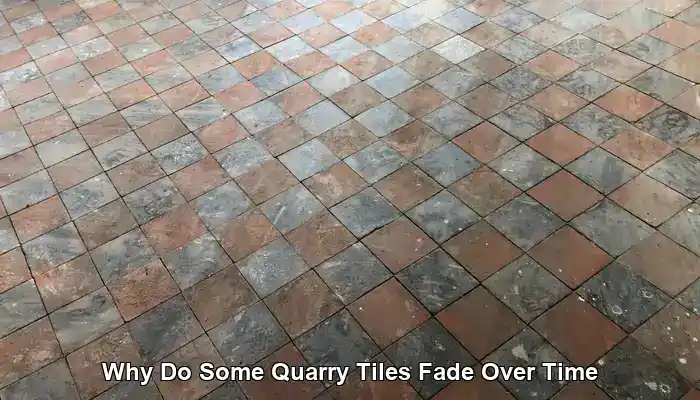
Quarry tiles are cherished for their remarkable durability, rustic charm, and timeless appeal. These dense, unglazed ceramic tiles are often used as flooring in warm kitchens or as a strong base for outdoor patios. They are built to endure heavy foot traffic and various challenging conditions. However, despite their strong reputation, many homeowners and property managers observe a gradual fading process over time, which can range from subtle to significant. This change can be perplexing, especially when tiles that once exhibited vibrant hues of deep reds, warm browns, or rich terracottas begin to appear washed out, uneven, or dull.
The fading of quarry tiles goes beyond mere aesthetics; it can indicate deeper issues such as wear, environmental stress, or damage from chemicals. Outdoors, these tiles endure relentless weathering from rain, frost, and temperature variations that slowly erode their surface. The freeze-thaw cycle is particularly harmful, causing micro-cracks and surface spalling, which expose lighter inner layers and coarser textures underneath. Indoors, the challenges are equally complex, as high foot traffic can wear down the pigmented surface layer, revealing the inner body, which often contains larger particles and varying mineral colors. This natural layering means that once the exterior is compromised, both color and texture can change drastically, diminishing the tile’s overall appeal.
Furthermore, exposure to chemicals significantly influences the fading of quarry tiles. Powerful cleaning agents, particularly those with acidic or alkaline properties, can damage sealers and strip away protective coatings. Over time, this makes the tiles vulnerable to staining, efflorescence (the appearance of salt deposits that lighten the surface), and dirt accumulation in newly formed pits and abrasions. Collectively, these factors contribute to a faded, uneven look that detracts from the tile’s initial beauty and overall charm, making it essential to understand and mitigate these risks.
Grasping the reasons behind quarry tile fading is vital for preserving their unique character and extending their lifespan. This comprehensive article will delve into the various environmental, mechanical, and chemical factors that cause fading—both indoors and outdoors—and provide actionable strategies for prevention and restoration. Whether you are maintaining a historic floor or working to preserve the beauty of your tiles, this guide will furnish you with a deeper understanding of the intricate science surrounding quarry tile wear and maintenance.
Expert Insights: Must-Have Products for Daily Quarry Tile Maintenance
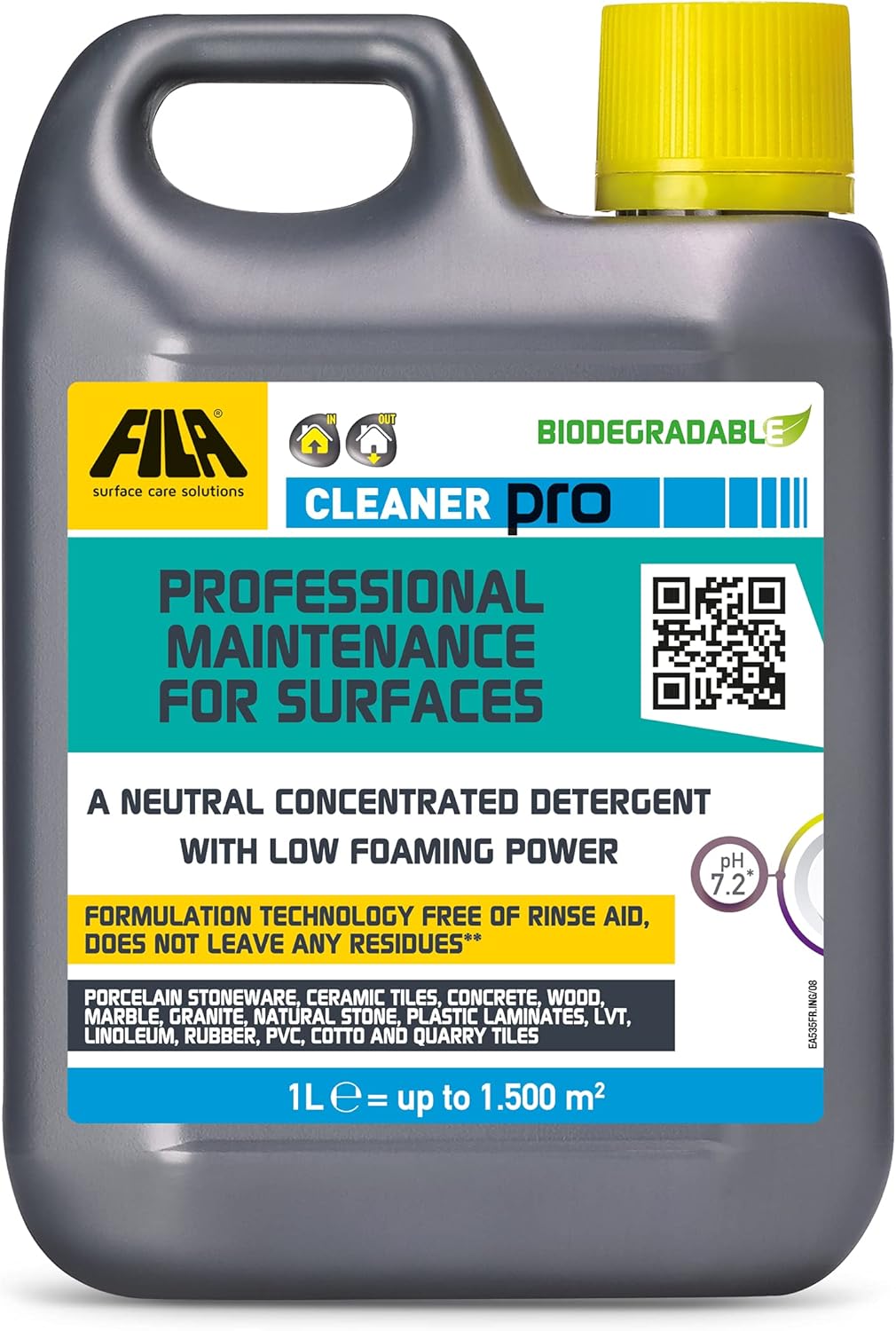
Fila Pro Floor Cleaner
|
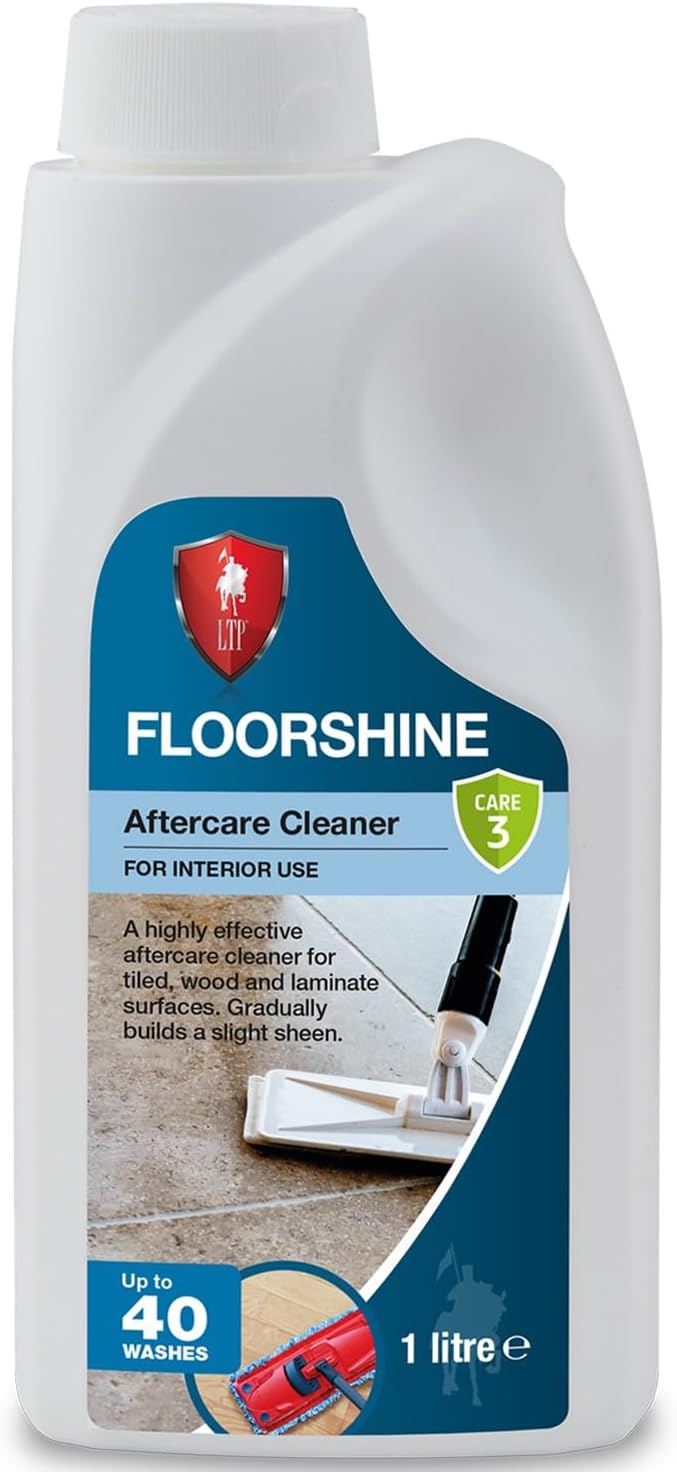
LTP Floorshine
|
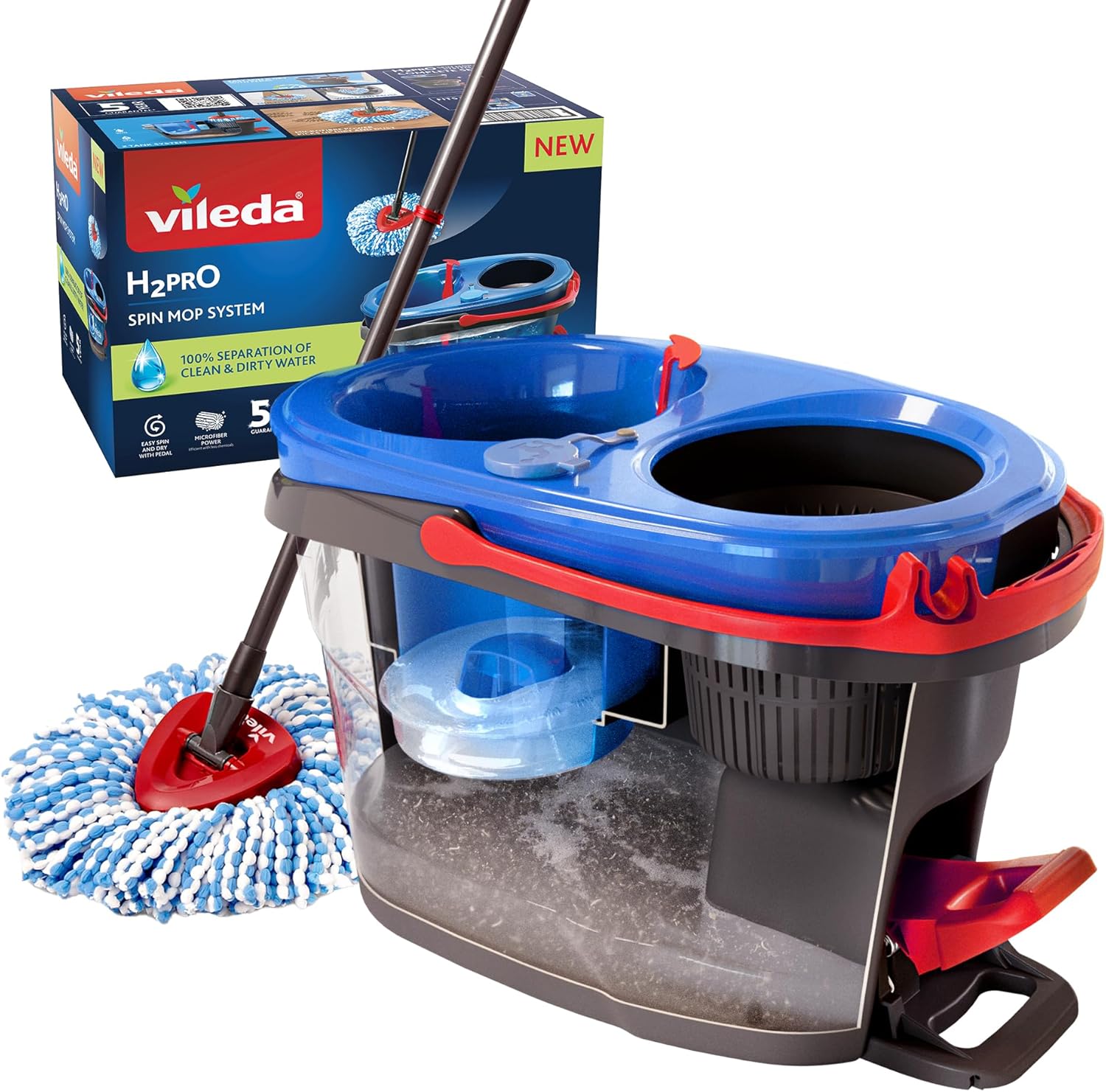
Vileda H2PrO Spin Mop System
|
Key Environmental Factors That Accelerate Quarry Tile Fading
Quarry tiles placed outdoors face a relentless barrage of environmental stressors that gradually wear down their color and texture. While these tiles are celebrated for their robustness, nature possesses an extraordinary ability to erode even the most resilient surfaces over time, leading to noticeable fading.
How Weather Conditions Affect Quarry Tile Longevity
Among the primary culprits of fading is the weather, especially the impacts of rain and the freeze-thaw cycle. Rainwater can infiltrate the porous surface of unsealed or inadequately sealed tiles, carrying minerals and contaminants that may stain or leach color from the tile. When temperatures drop, moisture trapped within the tiles expands as it freezes, leading to micro-cracks and flaking on the surface. This repeated freeze-thaw cycle exposes the inner body of the tile, which often consists of lighter and less pigmented materials, ultimately resulting in a diminished aesthetic appeal.
Surface Erosion and Inner Layer Exposure Consequences
Typically, quarry tiles feature a dense outer crust that retains their most vibrant colors. As this protective outer layer erodes—due to foot traffic, abrasion, or natural erosion—the underlying layer becomes visible. This inner layer tends to be rougher, containing larger aggregate particles and displaying a lighter, less consistent hue. The outcome is a patchy appearance that lacks the richness and vibrancy of the original surface, significantly detracting from the overall aesthetic of your outdoor space.
Impact of Chemical Exposure on Outdoor Quarry Tiles
Outdoor cleaning often requires the use of potent chemicals to eliminate moss, algae, or grime. Unfortunately, these strong cleaning solutions can degrade protective sealers and strip away essential coatings designed to safeguard the tiles. Once the sealer is compromised, the tile becomes increasingly susceptible to staining, mineral deposits, and accelerated wear. Over time, this chemical exposure plays a substantial role in contributing to fading and surface dullness, further diminishing the tiles’ visual appeal.
Critical Indoor Factors Contributing to Quarry Tile Fading
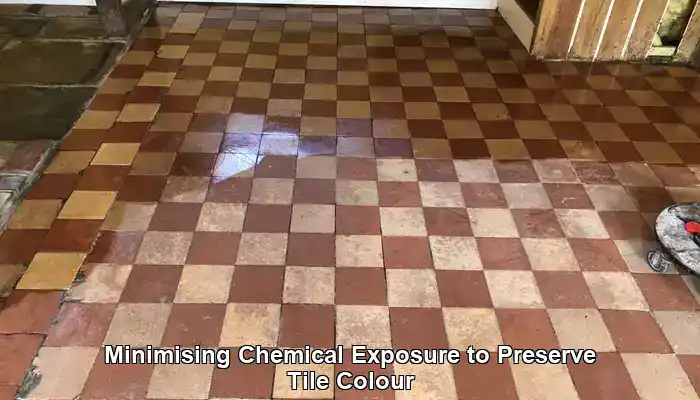
While outdoor quarry tiles endure environmental elements, indoor tiles confront a unique set of challenges capable of causing similar damage over time. Factors such as foot traffic and cleaning practices contribute to the gradual fading of indoor quarry tiles, often driven by surface wear, degradation, and chemical exposure.
Abrasive Wear and Loss of Surface Crust
Quarry tiles are designed with a dense, pigmented outer crust that provides their rich color and smooth finish. Indoors, especially in high-traffic areas such as kitchens, hallways, and commercial spaces, this crust gradually erodes. As the surface wears down, the inner body of the tile becomes exposed, which typically consists of larger mineral particles and features a more porous structure. This transition leads to a noticeable change in both color and texture. Earth-toned tiles may start to appear mottled or faded, with lighter patches where the crust has thinned, significantly altering the overall aesthetic of the room.
Micro-Pitting and Grease Accumulation Issues
As the surface of the tile deteriorates, micro-abrasions and pits begin to form. These tiny indentations become traps for soil, grease, and cleaning residues. Over time, the buildup of dirt in these pits creates uneven staining and dullness, which can be particularly frustrating for homeowners. Even regular cleaning may fall short of thoroughly removing embedded grime, resulting in a faded and blotchy appearance. This problem is especially common in older floors that have not been properly sealed or maintained, further complicating the tile care process.
Efflorescence: Understanding Mineral Migration and Its Effects
Efflorescence is another significant factor in the fading of indoor tiles. This phenomenon occurs when moisture beneath the tile rises to the surface, carrying soluble salts with it. As the moisture evaporates, it leaves behind a white, powdery residue that can lighten the tile’s appearance and potentially damage the surface. Efflorescence is particularly prevalent in areas lacking adequate subfloor ventilation or where tiles are installed over damp concrete, making it essential to address moisture issues to maintain the integrity of the tiles.
Chemical Overuse and Sealer Breakdown in Indoor Environments
Indoor cleaning routines often depend on powerful chemical agents, especially in commercial or food-preparation settings. While these products may effectively eliminate grease and stains, they can also strip away essential sealers and protective coatings. Once the sealer is compromised, the tile becomes more porous, increasing its vulnerability to staining, wear, and further fading. Acidic or alkaline cleaners can even etch the surface, permanently altering its texture and color. Over time, repeated exposure to harsh chemicals accelerates the deterioration of both the tile and its finish, leading to a significant decline in appearance and longevity.
Proven Maintenance Techniques to Retain Tile Colour
The fading of indoor quarry tiles is often preventable with attentive care. Implementing pH-neutral cleaners, adhering to a regular sealing schedule, and steering clear of abrasive cleaning tools can significantly prolong the life and visual appeal of the tiles. For older floors displaying signs of wear, professional restoration—including deep cleaning, re-sealing, and color enhancement—can help revive their original beauty and ensure they continue to enhance your home’s aesthetic.
Actionable Strategies for Preventing and Revitalizing Quarry Tile Beauty
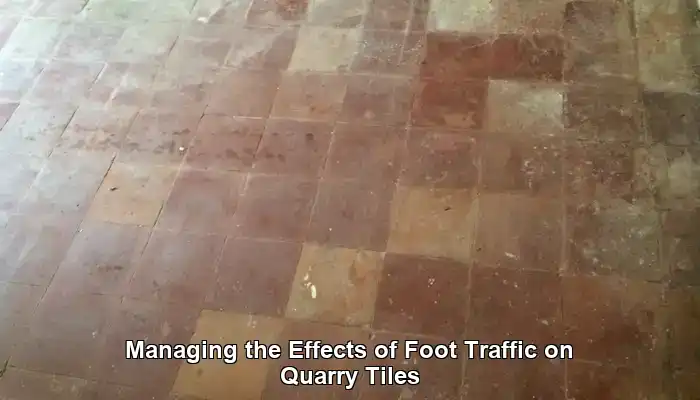
Understanding the factors leading to quarry tile fading is just the beginning; the real value lies in knowing how to prevent it and restore their original beauty when wear eventually occurs. Regardless of whether your tiles are indoors or outdoors, proactive maintenance and thoughtful restoration can significantly extend both their lifespan and the preservation of their rich, earthy character.
Sealing Your Tiles: The First Essential Step in Protection
One of the most effective methods for preventing fading is through proper sealing. Quarry tiles are naturally porous, and without an adequate protective barrier, they readily absorb moisture, dirt, and chemicals. A high-quality penetrating sealer fills the pores without forming a surface film, allowing the tile to breathe while simultaneously repelling contaminants. For outdoor tiles, this measure is crucial to protect against rain, frost, and algae growth. Indoors, sealing helps resist staining from spills, cleaning agents, and foot traffic that can lead to premature fading.
Sealers should be reapplied periodically—typically every one to three years, depending on usage and exposure conditions. A simple water-drop test can help determine when resealing is necessary: if water penetrates instead of beading on the surface, it indicates a need for reapplication to maintain protective qualities.
Smart Cleaning: Selecting the Right Products for Optimal Care
Routine cleaning is essential, but the selection of cleaning products is crucial. Harsh chemicals, especially those that are acidic or alkaline, can degrade protective sealers and etch the surface of the tile. Over time, this can lead to dullness, discoloration, and increased susceptibility to staining. Instead, opt for pH-neutral cleaners that are specifically designed for stone or tile surfaces. These products gently lift dirt without compromising the integrity of the tile or causing premature wear.
For stubborn grime or efflorescence, use targeted treatments sparingly and always follow with a thorough rinse. Avoid bleach, ammonia, and vinegar-based solutions, as they may seem effective at first but can lead to long-term damage and further contribute to fading.
Maintenance Practices That Help Preserve Tile Colour
Regular sweeping and damp mopping are effective strategies for preventing soil buildup and surface abrasion. Utilize soft-bristle brushes or microfiber pads instead of abrasive scrubbers, which can wear down the pigmented crust of the tile and lead to fading. In high-traffic areas, consider placing rugs or mats to minimize direct wear—particularly near entryways or kitchen workstations where foot traffic is heaviest.
For outdoor tiles, pressure washing should be approached with caution. While it can efficiently remove surface grime, excessive pressure can erode the tile or force water into cracks, exacerbating freeze-thaw damage. If pressure washing is necessary, keep the pressure low and maintain a safe distance with the nozzle to avoid damaging the tiles.
Professional Restoration: Rejuvenating Your Quarry Tiles
When fading becomes noticeable and routine care falls short, professional restoration can achieve remarkable results. Restoration specialists utilize a combination of deep cleaning, mechanical resurfacing, and color enhancement techniques to revitalize worn tiles and restore their original beauty.
- Deep cleaning removes embedded dirt, grease, and mineral deposits using specialized equipment and solutions tailored for quarry tiles.
- Mechanical honing or polishing smooths worn surfaces and restores texture, particularly on indoor tiles that display surface pitting and wear from foot traffic.
- Colour enhancement sealers can deepen faded tones, particularly in earth-toned tiles, enriching the natural pigments without imparting a glossy finish that could alter their intended appearance.
In cases of significant wear, restoration may also involve regrouting, tile replacement, or the application of protective coatings suited to the specific environment of the tiles, ensuring they remain both beautiful and functional.
Long-Term Care Strategies for Quarry Tiles
Preventing future fading requires a long-term approach and a dedicated maintenance plan. Establish a comprehensive maintenance schedule that includes regular inspections, cleaning, and resealing to keep your tiles looking their best. Educate family members or staff on appropriate cleaning methods and the importance of using suitable products that will not harm the tiles. For commercial spaces, consider partnering with a floor care professional to develop a customized plan based on traffic levels and environmental conditions to protect your quarry tiles effectively.
If your tiles are part of a heritage property or hold historical significance, consult with conservation experts before undertaking any restoration efforts. Preserving the authenticity of older quarry tiles often requires specialized techniques and materials to ensure their longevity and historical integrity.
Comprehensive Quarry Tile Care: Your Frequently Asked Questions Answered
Is it possible to restore faded quarry tiles effectively?
Yes, quarry tiles can often be restored through deep cleaning, resealing, or even professional refinishing techniques, depending on the extent of the fading. Homeowners should explore their options for rejuvenating the beauty of their tiles to maintain their charm.
How often should quarry tiles be cleaned for optimal maintenance?
Regular sweeping should be performed weekly, with deeper cleaning every few months to help maintain their appearance and mitigate fading. Establishing a consistent cleaning routine will help safeguard their vibrancy and ensure they remain beautiful.
Are there specific sealants designed particularly for quarry tiles?
Yes, specialized sealants formulated specifically for quarry tiles provide protection against moisture and UV exposure, enhancing both their longevity and aesthetic appeal. Homeowners should consult professionals for tailored recommendations to ensure the best possible care.
Which cleaning products should be strictly avoided on quarry tiles?
Avoid using acidic cleaners, harsh chemicals, and abrasive scrubbers, as these can damage the surface and contribute to fading. Instead, choose gentle, tile-safe products that will protect your investment and extend the life of your tiles.
How can I determine if my quarry tiles need resealing?
If water no longer beads on the surface or if the tiles appear dull and stained, it may be time to reseal. Conducting regular assessments can help maintain optimal protection and prolong the life of your tiles.
Does indoor lighting play a role in tile fading?
Indirect indoor lighting typically exerts less influence than UV rays; however, prolonged exposure to bright light can contribute to gradual fading. Homeowners should consider their lighting choices when designing spaces to minimize potential damage.
Is it advisable to use a steam cleaner on quarry tiles?
Steam cleaners can be overly harsh for quarry tiles, potentially damaging their surface. It is advisable to adhere to recommended cleaning methods to preserve their integrity and ensure they maintain their beauty for years to come.
Are some quarry tiles more prone to fading than others?
Indeed, tiles made from inferior materials or pigments may fade more quickly than those crafted from high-quality materials. Homeowners should prioritize quality when selecting tiles to ensure durability and longevity.
Does foot traffic significantly impact the lifespan of quarry tiles?
High foot traffic can indeed lead to wear and tear, accelerating fading and increasing the need for maintenance. Homeowners should implement strategies to effectively manage foot traffic to preserve their tiles.
Is it feasible to completely prevent fading in quarry tiles?
While entirely preventing fading is challenging, consistent maintenance, proper sealing, and the selection of quality products can significantly reduce color loss over time and help maintain the beauty of your tiles.
The article Why Do Some Quarry Tiles Fade Over Time: A Guide first appeared on https://www.abbeyfloorcare.co.uk
The Article Quarry Tiles Fade Over Time: Understanding the Reasons appeared first on https://fabritec.org
The Article Quarry Tiles Fade: Key Reasons Behind the Discoloration Was Found On https://limitsofstrategy.com
Leave a Reply